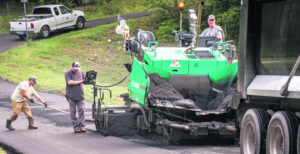Spring brings the run for the roses
By By Steve Strong / area horticulture extension agent
Feb. 19, 2003
As much of the country prepares this week to dig out from beneath a blanket of winter snow, Mississippi gardeners are getting ready for the spring thaw that's just around the corner.
Garden centers have re-stocked a vast array of trees and shrubs for spring planting, and roses remain among the favorite choices for the home landscape.
Many gardeners tend to shy away from rose growing, thinking that it requires too much work and that the plants are just hard to grow.
In fact, roses can be quite easy to care for provided that one chooses varieties adapted to our growing conditions and is not obsessed with a show-quality bloom from every plant in the garden.
Roses have several different types of growth habits according to variety, ranging from small to large bushy shrubs. They also have climbing varieties that rank from well-behaved to out-of-control ramblers.
Because of their diverse forms, it is important to choose a variety that fits the location and function.
All roses benefit from at least a half-day of full sunshine, with good air circulation and a fertile organic soil. While regular fertilizing is not a requirement, periodic feeding with a slow-release organic blend or liquid formula helps keep the plants perky along with deep watering every week or so during the dry months.
Regular pruning may be necessary to maintain the desired shape and size and to stimulate repeat flowering. Keep in mind that some roses, like the vigorous climbers silver moon and the thornless lady banks, are one-shot spring bloomers that should be allowed to flower first before they are pruned back later in the season.
Hybrid teas, polyanthas and other repeat bloomers are normally pruned the first time between mid-February and March with the goal of removing all dead and diseased canes. Plants can be cut back to between waist- and knee-height, with only about three to five main canes left as the support structure.
When planting new roses in the garden, avoid planting too deep below the soil line and make sure the knobby graft union of hybrid tea varieties is well above the soil and mulch.
Grafted varieties that are buried in soil and mulch tend to rot off, resulting in the death of the flowering variety on top (the wild rootstock usually sprouts up later with a different bloom).
Several rose varieties are versatile enough to thrive even in shady gardens with four hours of sun or less. For these challenging conditions, try chestnut rose, swamp rose, Marie Pavie, ballerina, eutin or the climbing cecile brunner.
For blistering sunny garden sites, consider the heat tolerant classes of China and old tea roses (old blush, Mrs. Dudley Cross, Louis Philippe, Duchesse de Brabant). Each has varying degrees of resistance to disease problems like black spot and botrytis fungus, although the varieties growing on their own rootstocks tend to be much tougher than the grafted, spray-dependent hybrid teas.
Fragrance may be an added bonus for many new and old varieties, and scents may include fruit, spice, citrus, liquorice, myrrh and musk. Some even have fragrant foliage like the apple-scented sweetbriar rose or the rosy aroma of the hairy-glanded moss rose family.
Check with local garden centers for available varieties, and with the county Extension Service office for more information on rose culture.
If you can't find what you are looking for, contact the Antique Rose Emporium or other mail order businesses. And don't forget about the Meridian Community College Horticulture Department.










